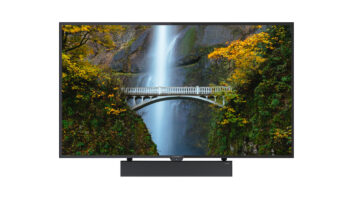Monday, Sept. 8, 1986, the premiere issue of TWICE, Volume 1, No. 1, begins showing up in the mailboxes of thousands of consumer electronics and video software retailers across the country. It was then a weekly publication, and to allow for the uncertainties of the U.S. Postal Service, and to appear current even though delivered later in the week, the front and inside pages indicated the issue was for “The Week of September 8-13.”
The industry was, more or less, in the shape it had been for the last decade, and few really understood that the transition to the industry of today had already begun. The big two brands, RCA and Zenith, divided up a whopping 33 percent of the U.S. color market, while Philips, selling only the Magnavox, Sylvania and Philco brands, followed with about 11. In VCR sales, RCA, with a 14 percent market share, and Panasonic at 12 percent, ranked one-two, with no other brand approaching a double-digit share.
Facing a hatful of problems, not the least of which was steadily eroding prices on TVs, VCRs, and traditional audio equipment, manufacturers would announce price increases in one quarter and rollbacks in the next. The movie industry was in Congress once again, seeking legislation to put anti-copy circuitry into VCRs. The pending debut of digital audio recorders had music industry representatives standing in line right behind them.
The VHS vs. Betamax format war was all but over, but the stage was set for another; the battle of the mini-camcorders between old adversaries, JVC with VHS-C and Sony’s 8mm. Sony’s 1985 introduction of 8mm already had a major impact on the industry with reduced consumer demand for portable VHS decks and separate color cameras.
Sales of VCR decks continued strong, although a number of industry marketers and researchers were correctly predicting sales would flatten over the next several years.
On the retail front, major buying groups, composed of regional retailers, were the dominating force in the hardware market. Sears, and to a lesser extent Radio Shack, were the only nationwide powers. On the software front, small independent storefronts still ruled the roost and, thanks to the rapidly growing demand for movies on tape, there were high hopes for the sale and rental of videocassette players.
The audio market was struggling as consumers awaited the inevitable drop in pricing needed to spark the market for CD players and discs. But for TV, the arrival of stereo was showing signs of boosting color sales to all-time highs, and demand for this feature at the consumer level was running at double the 1985 pace.
But all was not as well at the manufacturing level. GE had just completed its acquisition of RCA and shuttered its own color TV business. Philips was restructuring its U.S. color TV business, changing its marketing strategy, upgrading its factory and preparing to introduce the Philips brand. Matsushita was questioning its acquisition of Quasar, Motorola’s TV operation, and was considering moving it closer to its profitable Panasonic operation. Financially troubled Zenith, looking for help, but of its own choosing, adopted a poison pill defense against any unfriendly takeover offer.
While TWICE’s first year was only four months long, the period contained more than enough news and product introductions to fill up its pages. On the financial front, both Philips (Magnavox) and Zenith reflected their enjoyment of the color TV sales surge by reporting profitable third quarters, but nearly all major Japanese manufacturers posted lower earnings for the same period. They put the blame on the rising value of the yen, which cut into sales and profits generated in the United States Also, presaging the future, Korea’s two manufacturing majors, GoldStar (LG) and Samsung, announced that they were planning to stress sales of their step-up TV models during the Christmas selling season.
In reaction to price cutting. Bloomingdale’s, the upscale department store chain, announced the closing of its consumer electronics department. And, as if to underscore that move, Sears made a pre-Christmas cut in Mitsubishi’s 35-inch color TV, the industry’s biggest, to $2,995. The move upset Mitsubishi’s smaller retailers who had been adhering to the manufacturer’s suggested retail range of $3,400-$3,500. New product introductions: TVs and VCRs with digital special effects, including picture-in-picture and freeze-frame; Magnavox’s remote control accessory, the first preprogrammed for use with most major brands of TVs, VCRs and cable boxes; after-market car radio manufacturers introduced the latest in anti-theft production: slide-out radios that allowed drivers to remove them when not in use.
The industry also faced some new legal and political issues. Jack Valenti, president of the Motion Picture Association of America, got major support in his lobbying effort to get Congress to pass legislation requiring anti-copy circuitry in new VCRs, when the Video Software Dealers Association (VSDA) signaled its support for the idea. The Electronic Industry Association/Consumer Electronics Group (now the Consumer Electronics Association), which was a long-time backer of the VSDA, viewed this as a stab in the back and had counted them as an ally in its anti-legislation fight.













